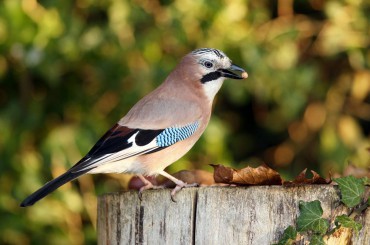 The gardening magazines and catalogs that arrive in January are reminders that spring in the Northwest isn’t far off. Thinking about spring gardening chores is the perfect time to consider the birds we hope to attract to our yards in the coming months.
The gardening magazines and catalogs that arrive in January are reminders that spring in the Northwest isn’t far off. Thinking about spring gardening chores is the perfect time to consider the birds we hope to attract to our yards in the coming months.
There are four factors to keep in mind when making a yard attractive to a wide variety of birds — food, water, protective cover and nesting habitat. If a yard provides all or most of these, the birds will come.
Bird feeders are an easy way to provide food, but they are mostly for our pleasure. Birds need natural food sources to sustain them throughout the year. There are two kinds of food to focus on because birds fall into two food groups.
There are the vegetarians that eat seeds, berries and nuts. There are the meat eaters that eat bugs and worms. Some birds eat meat but they also eat vegetarian. These include robins, varied thrush, woodpeckers and jays.
Which trees, shrubs and flowers can we include in our landscaping to provide food for the vegetarians? The list is almost endless and a bonus is that these same plants will sustain an adequate bug population for the meat eaters.
The more densely planted our yards are, the more birds we will enjoy. They find the food they need and there is protective cover to provide shelter from bad weather and predators. This cover also makes good nesting habitat.
A simple example of this is a grouping of Spirea bushes. There are several varieties that have beautiful foliage. They are also covered with blossoms the bees, butterflies and hummingbirds can’t resist.
Dense plants like the Spirea can shelter a bird fleeing from a hawk. When these plants or others like them are grouped into a thicket-like arrangement, they become nesting habitat for the towhees, song sparrows and juncos.
One way to select a plant that provides birds with protective cover and nesting habitat is to think like a bird. Look at the plants you are considering putting in your yard. If you were a small bird and wanted to nest in them, would they be dense enough to make you feel safe?
Bird houses work for some birds, but most prefer natural nesting sites. These can be challenging to bring into our yards. In addition to the ground nesters that require thicket-like plantings, other birds need old trees or snags for nesting. If a tree must come down, consider leaving part of it for the woodpeckers and other cavity-nesting birds.
Large, dense trees or shrubs are places where robins and house finches build their nests. A mix of evergreen and deciduous trees and bushes is desirable for an attractive and interesting landscape. It also supports a greater variety of nesting birds.
Food, protective cover, nesting habitat — these are the big challenges when creating a yard that will attract a wide variety of birds. Water is equally important, but it is the easiest element to add to the garden.
One bird bath will attract a greater variety of birds than many different bird feeders. Make sure the bath provides different depths. Choose one that slopes from a very shallow edge to a deeper center. Then tiny bushtits can use it as well as the Steller’s jays and everyone in between.
The more elaborate the water source you provide, the more birds you will enjoy. Landscaping with water features is extremely popular. The limiting factor is your bank account.
Now, pick up your favorite gardening magazine and make those spring plans.
























